Intro
Just about everyone owns a pair of sunglasses, and for good reason. They protect your eyes from harmful UV rays and, oftentimes, they make you look good. From sporty to casual models, there are more sunglasses on the market now than ever before. Part 1 of our roundup includes a variety of sport-oriented styles and lens tints, ideal for activities when a typical pair of sunglasses might not do the trick due to coverage, slipping, eye protection, etc.
When shopping for sunglasses, arguably the most important factor to consider is UV protection. Regardless if your sunglasses have clear, yellow, or dark lenses, make sure they have 100% UV or UVA / UVB protection. Also worth considering is how much coverage a lens provides, and whether the model of sunglass fits well enough to stay on your face without constant readjustment.
We’ll be adding some more options in the future, and if none of the options here really seem like what you’re looking for, you should check out our 2020 Sunglasses Roundup, which includes a ton of additional models, including plenty of purely casual-use ones.
Frame: Flynn Soft Matte Black
Lens: Happy Gray Green
Stated Measurements:
- Frame Width: 145 mm
- Lens Height: 49 mm
- Arm Length: 140 mm
Measured Weight: 35 g
MSRP: $150
Best For: People with medium to large-sized faces
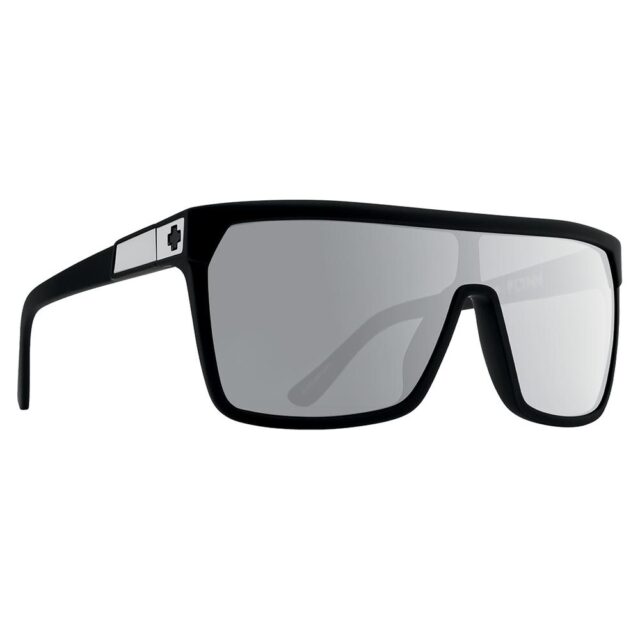
Kristin Sinnott-Green: I originally wrote about the SPY Flynn sunglasses in our May 2022 “Stuff We Like” roundup because they had been my go-to sunglasses over the winter and spring. More oversized than I tend to prefer, I’ve really loved the coverage the model provides, and fellow reviewers Sascha Anastas and Kara Williard boosted my confidence with their compliments when they saw me wearing them. Subsequently, I started wearing them even more after that (never underestimate the power of a compliment).
The Flynn glasses are large, and while they do have a curve to them, I wouldn’t consider them wraparounds. Light can still seep in from behind, but in general, they provide a great field of vision and great coverage. The frame is made of “Grilamid™,” which is known for being lightweight yet strong. The frame is smooth, soft, and somewhat flexible, making the glasses comfortable to wear, and they don’t tend to slip down my nose during activity.
The lenses on the Flynn are clear and the Happy Gray Green has a nice, fairly light tint to them. The tint has worked well for me on sunny days as well as on overcast days. Despite the large frame, I find myself reaching for these sunglasses most days regardless of whether I’m planning to go for a run, mountain bike ride, or just hang around the house.
Frame: Soft Matte Black Translucent Blue
Lens: Happy Gray Green with Blue Spectra Mirror
Stated Measurements:
- Lens Width: 134 mm
- Lens Height: 50 mm
- Frame Width: 140 mm
- Temple Length: 140 mm
Measured Weight: 33 g
MSRP: $150-$210
Best For: Everyday use
Dylan Wood: The Spy Flynn 5050 is identical to the Flynn, above, apart from a semi-rimless lens. It’s been my “everyday” pair of sunglasses for about 2 years now, and I have worn them, well, almost every day in that span of time. While they’re often on my face walking to and from the bus, I’ve also used them while rowing a raft down the Grand Canyon, skinning up peaks in the Tetons, graduating college, and on the occasional mountain bike ride. They offer great color, and the specific lens I used gave everything a slight green tint that made summer foliage pop out a bit more. These glasses are comfortable on my face and mostly secure, though not as much as the more performance-oriented options here. I’ve really put these glasses through the wringer, and they still function well to this day. The mirrored finish of the lens has a ton of micro-scratches (no fault of the glasses, just my oftentimes inattentive handling of them), but these scratches don’t affect the optics of the glasses much at all. A screw that holds one of the pivoting arms in place sometimes works its way out of the frame and needs to be screwed back in, but other than that, I’ve had no issues with these.
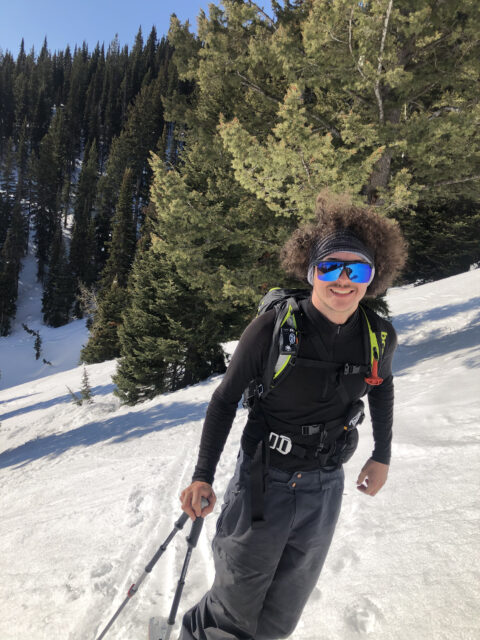
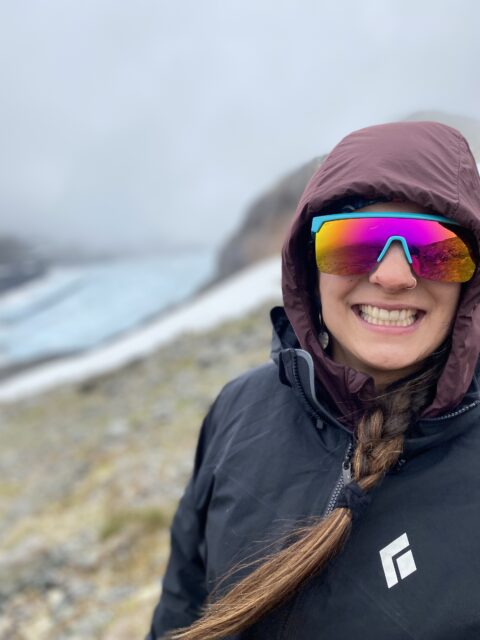
Kara Williard: Like Dylan said, the SPY Flynn 5050 has become a go-to sunglass for me, whether it’s for activities or just being out and about. They are a pretty large, mostly frameless pair of glasses that offer quite a bit of protection. While they offer good coverage, they don’t always excel in breathability or fog prevention, which I noticed the most when sweating hard in humid conditions while on my bike. They also don’t wrap on the sides of my face quite as much as my Smith Wildcats.
But for most activities, they work well. The Flynn occupies a nice realm of sunglasses that aren’t purely for activities, nor lifestyle-wear, but can easily transition between the two. If I need one pair of glasses for an eventful day of biking, hanging out with friends, going around town, etc., it is likely that I will choose the Flynn. They are both protective but stylish, making it a more versatile choice when I don’t want to be wearing a pair of bike-oriented sunglasses around town.
I have yet to really test the durability of the Flynn 5050, but the design feels substantial while still being lightweight. And all that I mentioned about the “Happy Boost” technology transfers over to this model of the Flynn, too. The Flynn works well as a one-quiver pair of sunglasses.
Frame: Matte Black
Lens: Chromapop Black
Stated Measurements:
- Frame Width: 135 mm
- Lens Height: 59 mm
- Temple Length: 130 mm
Measured Weight: 26 g
MSRP: $209-$229
Best For: Folks with small / medium faces looking for performance sunglasses
Dylan: The Bobcat is new for 2022, and it was designed to be a smaller Wildcat, which is a popular option from Smith. These glasses are meant for smaller faces, and they stand out for being lightweight, simple, and very comfortable. The Bobcat had a light, barely-noticeable feel on my face and I could wear them comfortably for as long as I wanted. I have a pretty normal, maybe slightly smaller-than-average-sized head and face, and they were very secure on me. They didn’t shift around, even when riding rough trails with sweat coming down my forehead. Additionally, the nose piece on these glasses is adjustable to accommodate different face shapes.
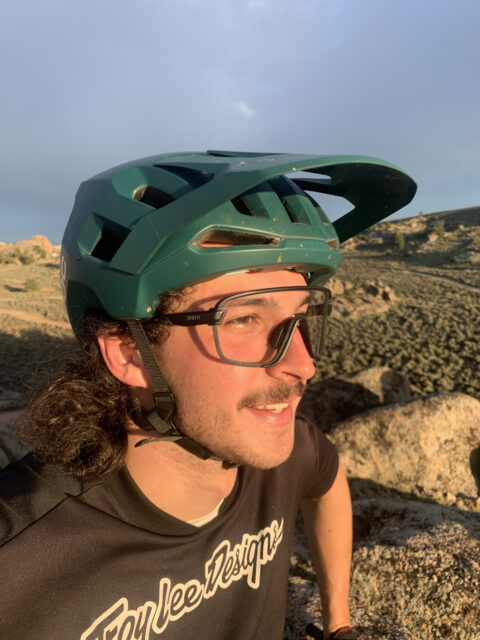
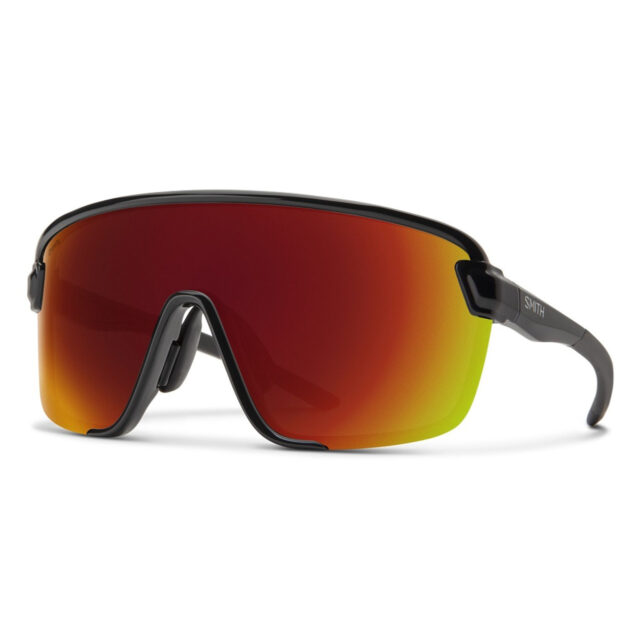
The Bobcat’s lenses are interchangeable, and switching between lenses is an easy task. Both lenses offer crisp optics and a distortion-free view. The Chromapop Black lens offers good color and contrast and is ideal for very sunny environments, such as the mostly treeless Hartman Rocks in sunny Gunnison, CO. The Chromapop Black lens still works decently well on cloudier days and in dense woods, but I prefer the clear lens for rides when the sun isn’t always shining down on the trail. So, if you like the sound of slightly smaller full-coverage performance sunglasses that are lightweight and comfortable, the Bobcat is definitely worth considering.
Frame: Transparent Crystal
Lens: Clarity MTB Silver Mirror Cat 2
Blister’s Measurements:
- Frame Width: 142 mm
- Lens Height: 56.5 mm
- Temple Length: 192-118.5 mm (adjustable)
Measured Weight: 40.5 g
MSRP: $250
Best For: Folks looking for well-ventilated, adjustable, full-coverage performance sunglasses
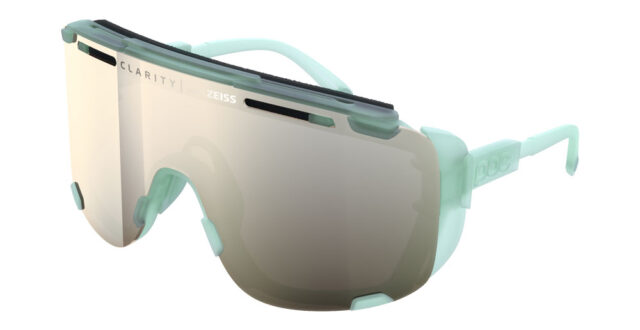
Dylan: POC’s Devour sunglasses offer almost goggle-like coverage without the lack of ventilation that comes with goggles. They’re quite big and have a bold look, but this isn’t just for style points. The Devour offers a very wide field of vision, especially in the horizontal direction. Optics are also crisp and distortion-free. The category 2 (medium-ish brightness) lens on my particular pair is ideal for a variety of outdoor light conditions — from very sunny to somewhat cloudy — and offers good color and contrast. I also used the clear lens on these glasses a lot, and switching between the two is easy. Additionally, the arms of the Devour can be adjusted length-wise, and the arms have a more pronounced bend in them that allows you to dial in the fit on top of your ears. The nose piece is also adjustable width-wise to accommodate different face shapes. This resulted in a comfortable, secure fit on my face.
I found myself really liking these glasses on cold, wet rides. They offer great protection against trail debris, like mud and water, and shed debris relatively quickly, keeping your vision clear. Most notably, the Devour is very fog-resistant and offers great ventilation. Not only did this result in condensation-free outings in wet conditions, but the sunglasses also helped keep my face cooler on hotter, dryer rides.
David Golay: I’ve had a really hard time finding riding eyewear that works well for PNW mountain biking conditions, and the Devour is head and shoulders better than anything else I’ve tried to date. Most of my riding is done under heavy tree cover, so I rarely want to wear actual sunglasses when mounting biking; instead, my main use case is for eye protection when riding in wet conditions, to keep mud and spray out. The problem there is that when you’re riding in cold and wet conditions, fogging is a huge issue. Goggles are essentially good for one lap at best before they’re impossible to see through; some glasses can fare a bit better, but they often don’t have complete enough coverage to stop mud clods from finding their way in on the sides.
The Devour isn’t 100% perfect but it does get around both of those things far better than anything else I’ve tried. The glasses provide huge coverage, with the lens sitting pretty close to my cheekbone at its bottom edge. The lens is also slightly angled out in a way that creates a gap at the top (for good airflow). Sweat that accumulates in my eyebrows doesn’t get directed straight onto the lens when they make contact, either. And as Dylan said, the optics are really good; the included clear lens is easy to swap in and has been my go-to for the damp, dark woods that I’m out in so often. They’re excellent.
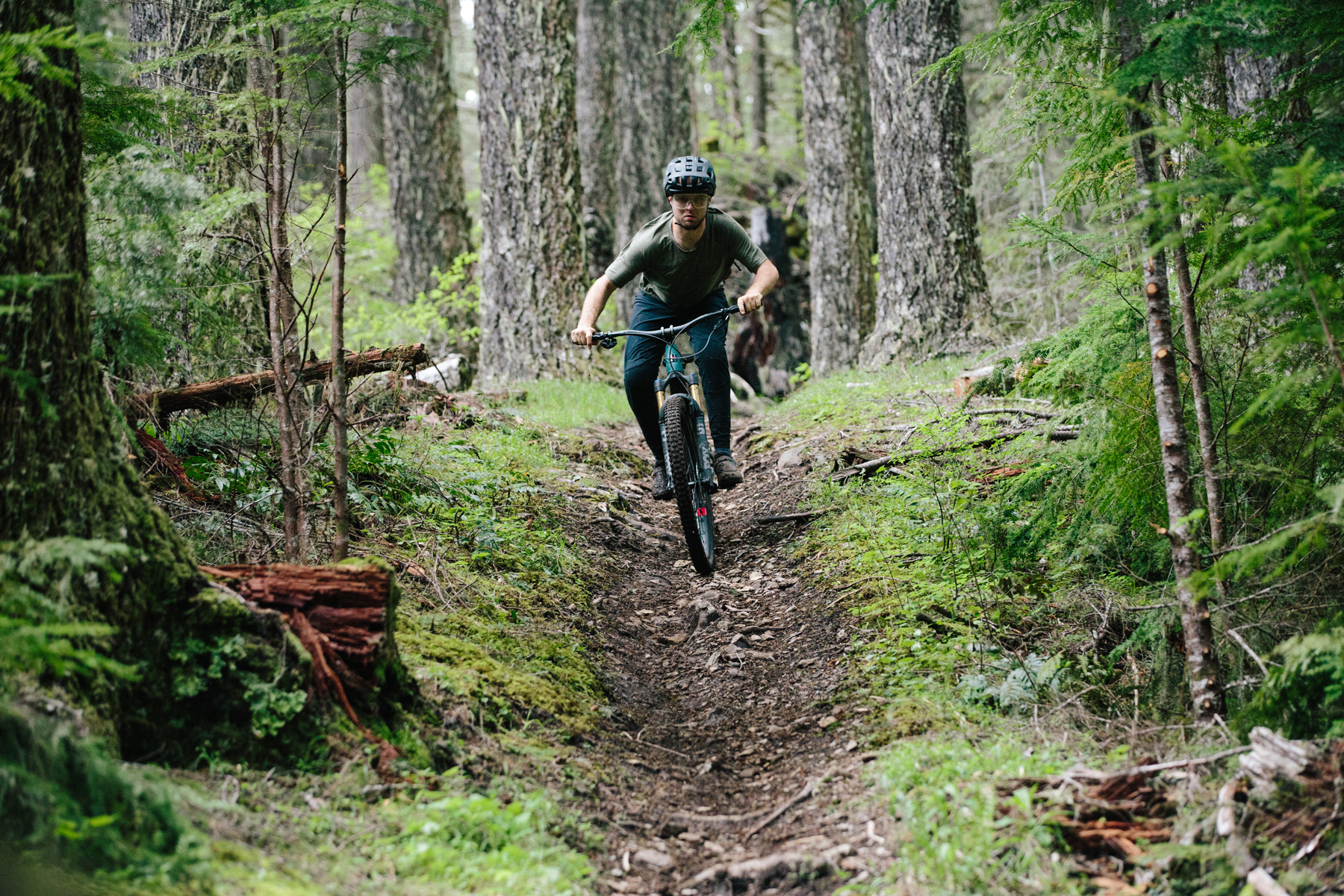
Frame: Matte Black
Lens: Happy Boost Bronze Polar Ice Blue Spectra Mirror
Stated Measurements:
- Frame Width: 145 mm
- Lens Height: 41 mm
- Arm Length: 140 mm
Measured Weight: 30 g
Best For: color enhancement
MSRP: $210
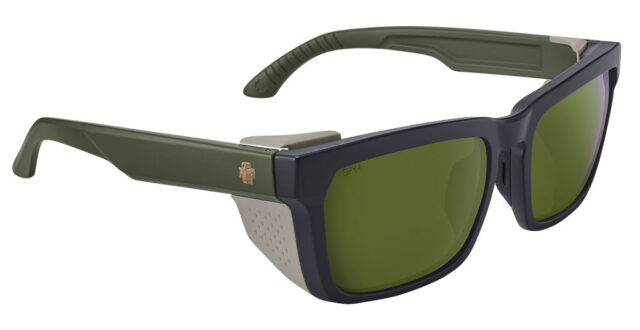
Kristin: “Happy Boost™” technology is a new lens technology that SPY introduced in 2022, and it is aptly named; the lenses really do create a boost of happiness whenever I wear them. I am amazed by how vivid everything looks, from landscapes that typically look bleached out in the midday sun to plain potato chips that look more like sweet potato chips. The lens enhancement has a way to make things look better and/or more interesting.
The “Happy Boost™” lens enhances reds and greens and makes everything much more vibrant. On a recent river trip in canyon country, the red rocks and green grass popped and made the landscape exceptionally vibrant. I spent the first few hours marveling at the scenery, and when I eventually took the Helm Tech sunglasses off for a minute, I realized not everyone was quite as awestruck as I was. The scenery was beautiful on its own, but with the help of the “Happy Boost™,” it was even better. If you are sensitive to red tints or heavily tinted lenses, there are a number of other lens options.
I was initially drawn to the Helm Tech frame because of the removable side shields. I had never owned a pair of sunglasses that had shields and I was curious to see if I’d like them. It’s fairly easy to install the shields, but over the course of the last few months, I’ve found little need to use them. I like the idea of having them for ski touring, but I have yet to use the Helm Tech sunglasses on snow.
The frames are smoother plastic than the Flynn sunglasses. But unlike the Flynn, the arms of the Helm Tech have ridges that help to prevent slippage. I haven’t had any issue with them sliding down my nose during activity, even on hot and humid days. The rubber nose pads also have small ridges to help keep them in place and hidden sweat channels. In general, if you have a medium to large face and you’re looking for a pair of sunglasses that can handle most activities without looking too technical, the Helm Tech is worth looking into, especially if the idea of removable side shields is intriguing.
Frame: Matte White
Lens: Happy Bronze Platinum Spectra Mirror
Stated Measurements:
- Frame Width: 138 mm
- Lens Height: 60 mm
- Temple Length: 147 mm
Measured Weight: 45 g
MSRP: $150
Best For: Huge coverage on medium size faces
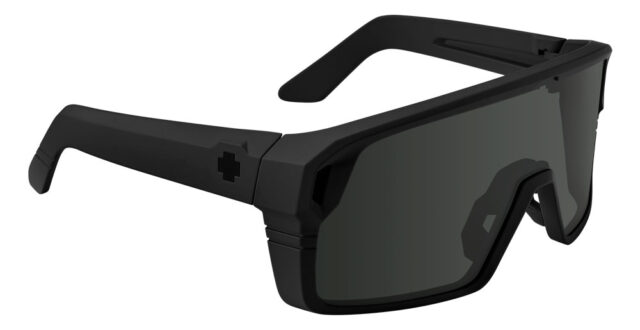
David: The Monolith is a huge, wide coverage option that could work really well as bike or ski eyewear for the right folks, if the fit happens to click. At least on my face, the nose bridge of the Monolith feels a bit narrow, causing the glasses to sit a little higher than would be ideal. The result is that I can see a lot of the bottom part of the frame (despite the very large lens) and the top of the frame bumps into my brow a bit. I think someone with a little smaller face, overall, would fare better, but the coverage of the Monolith (I mean, it’s called the Monolith) is still huge, so there’s a bit of a line to tread there.
The Happy Bronze Platinum Spectra Mirror lens is quite a mouthful, but also really nice — for such a huge wraparound lens there’s impressively little distortion, even at the periphery, and the tint is a fairly light brown color that does an especially good job of enhancing contrast in flatter light. Largely for that reason, I’ve worn the Monolith on a lot of days ski touring this last winter and spring and really liked the optics for that use. I just wish they fit me a little better (and I could go for a more subtle color than the white frames that I have) but if they fit you well, the Monolith has a lot going for it.
Frame: Matte Black
Lens: Happy Gray Green Polar Black Spectra Mirror
Stated Measurements:
- Frame Width: 142 mm
- Lens Height: 59 mm
- Temple Length: 147 mm
Measured Weight: 43 g
MSRP: $190
Best For: Huge coverage on medium-size faces
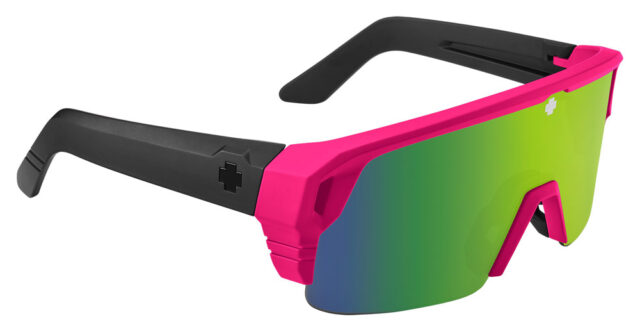
David: The Monolith 5050 is pretty much a half-frame version of the Monolith, and the fit is extremely similar. Losing the lower portion of the frame does improve downward vision a bit (especially given what I said about how the Monolith sits on my face — check out the section above for more on that) but also means that the bottom edge of the lens is a little more open, either for airflow (in a good way) or dirt getting flung in (in a less good way) if you’re mountain biking.
Otherwise, everything I said about the Monolith applies here, too, though the Happy Gray Green Polar Black Spectra Mirror lens that I tested on the Monolith 5050 is substantially darker than the Happy Bronze Platinum Spectra Mirror on the standard version. Both sunglasses are available with a variety of lens options, so that’s nothing inherent to either frame model.
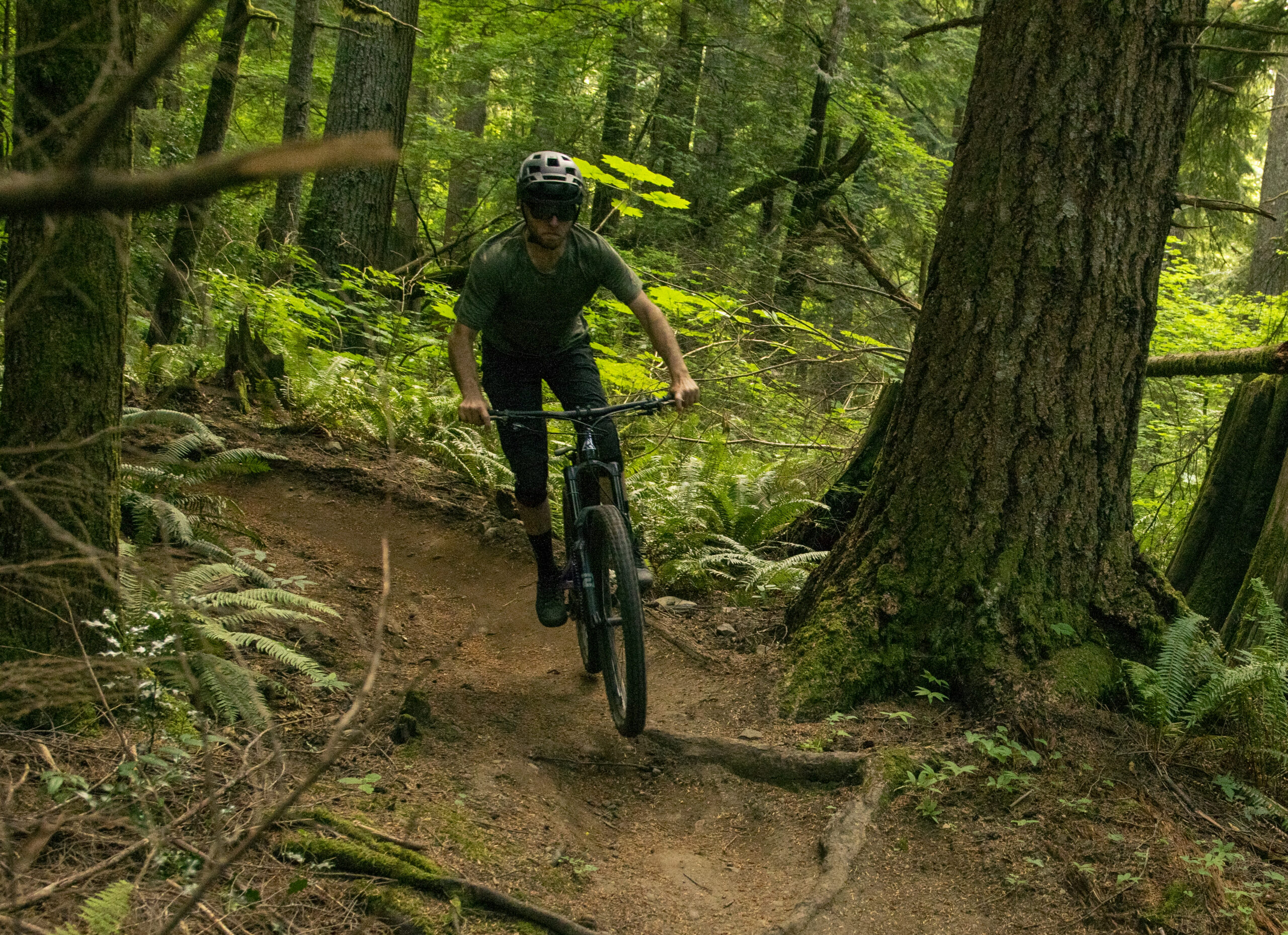
Frame: Matte White
Lens: Chromapop + Black Lens
Stated Measurements:
- Frame Width: 140 mm
- Lens Height: 62 mm
- Temple Length: 125 mm
Measured Weight: g
MSRP: $209
Best For: Biking, ski touring, preferable for larger faces or maximum coverage
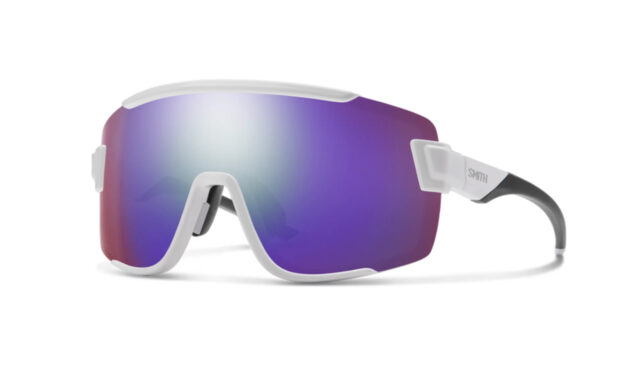
Kara: The Wildcat is my most functional pair of glasses, and undoubtedly the pair I have spent the most time in over the last year. As far as sunglasses with interchangeable lenses go, the Wildcat has an easy and intuitive system based upon lining up five places on the lens with the frame. The frame itself is quite light and flexible, making It easy to line up when swapping lenses. Having the option of interchanging lenses is way nicer than I initially imagined. All the Wildcat frames come with two contrasting lenses. I found myself using the clear lens quite a bit, including on several low-light ski tours this winter, and evening bike rides in the dense forest. Alternatively, I use the black lens on the majority of really sunny days here in the Gunnison Valley when I need to be well-protected against strong UV rays. The nose pads can be adjusted to the width of your nose, which also makes for a comfortable fit. And while this is a large frame, I find it to integrate well with several different ski and bike helmets.
I have used Smith’s “ChromaPop” technology in a few different sunglasses and goggles, and while it isn’t quite as visually pleasing as SPY’s “Happy Boost,” it does a good job of bringing about colors and contrast in a subtle way.
The Wildcat works best for optimizing coverage while maintaining good breathability, and across all instances in which I’ve sweat a lot or dealt with hot / humid conditions, I have yet to find the Wildcat fog, even when closely fit to my bike helmet. The coverage the Wildcat offers is nice, and it does a good job of wrapping on the periphery, too. I have certainly noticed that it keeps cold wind or moisture out better on the sides of the glasses than most other pairs I have tested.
That said, the Wildcat has a pretty large frame. I think it works well for me since I have a big head with a face that doesn’t really have petite features. However, Smith recently released their Bobcat, which provides a nice alternative for someone seeking a smaller frame, but with all the features of the Wildcat.
Frame: Matte Black
Lens: Photochromic Copper Blue Mirror
Stated Measurements:
- Lens Width: 58 mm
- Lens Height: 45 mm
- Temple Length: 145 mm
Measured Weight: 34 g
MSRP: $219
Best For: A variety of light conditions, including full protective coverage for glacier travel, ski touring, mountaineering, and watersports
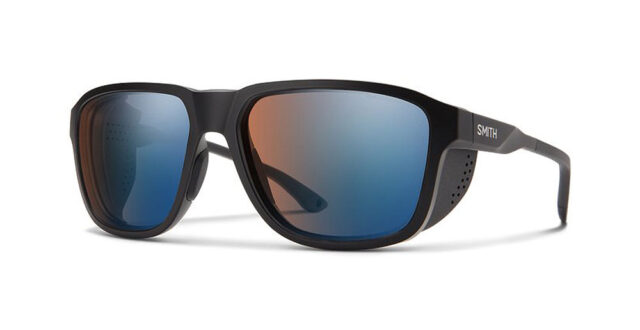
Drew Kelly: The Embark with Photochromic lens mainly functions as my pair of sunglasses for the alpine. When originally searching for the appropriate pair of eye protection for that setting, I was looking for the most reflectivity possible. And while the Embark satisfies those basic requirements, it goes beyond them. The side shields are much larger and, in my experience, more durable than many other options I’ve tried. They also snap into place, which has kept the shields comfortably off of my face. Ventilated holes stamped along their sides prevent the sunglasses’ less airy high-coverage system from fogging as quickly. The photochromic lens makes these sunglasses appropriate for a huge range of light conditions (7%-45% VLT), which is typical in the alpine. While I was originally hesitant to use a photochromic lens because I have very sensitive eyes, Smith’s system is designed to react a little less dramatically to light changes, seeming instead to trend toward more light reflectivity.
As someone reluctant to throw lots of money at sunglasses I’ll inevitably lose, I appreciate the versatility I’m afforded with the removable sunshades and a frame shape implying Smith’s more lifestyle oriented sunglasses. So by removing the side shields you end up not only with better peripheral vision for activities like biking or running, but also the ability to walk down the street and not feel like a total dorktron or serial killer.
If you have a small or medium sized face and are searching for a better looking, more durable pair of glacier glasses with removable side shields (and photochromic lens, if you choose that option), consider the Embark.
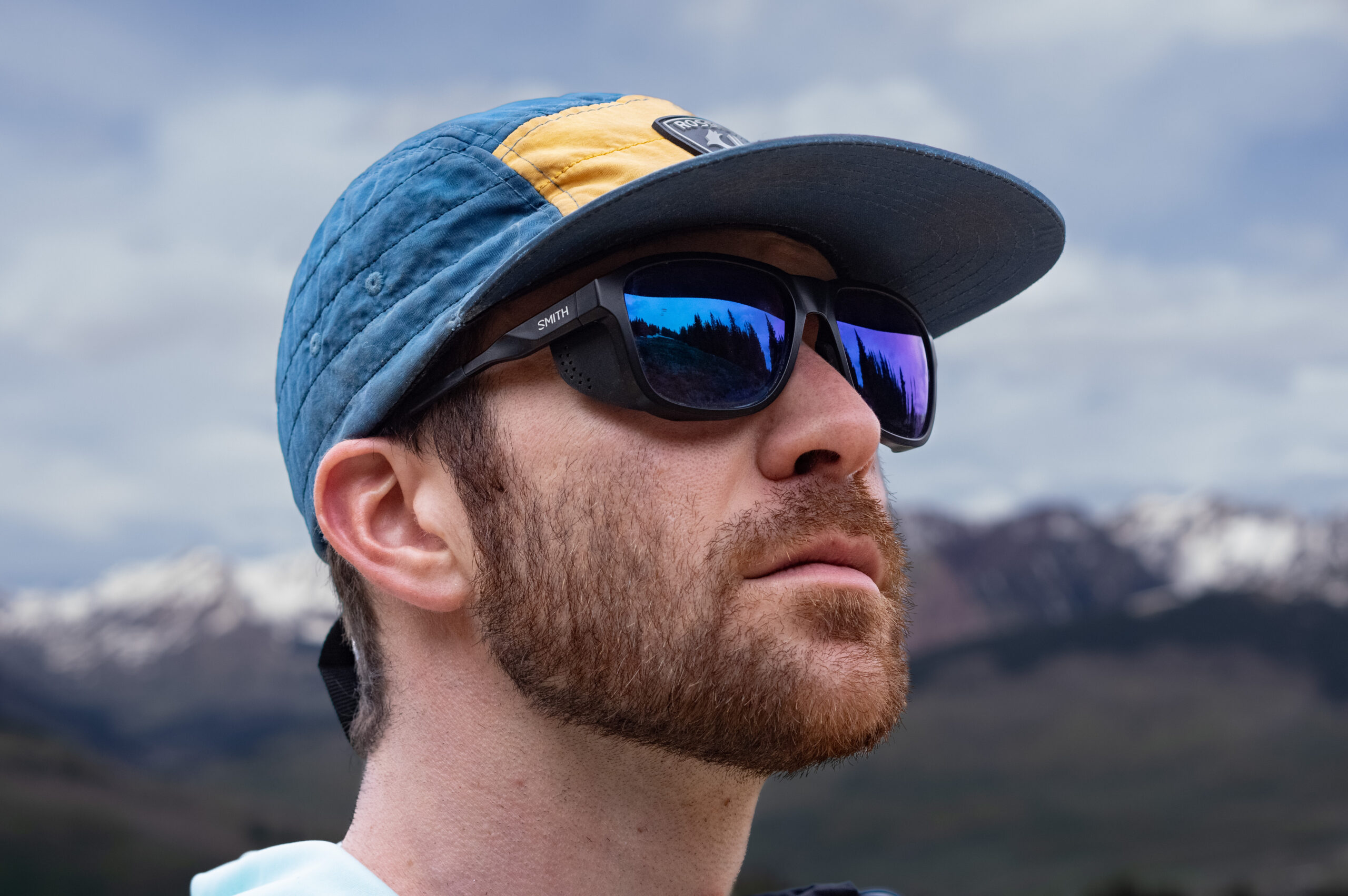
Frame: Matte Black
Lens: Prism Trail
Stated Measurements:
- Lens Width: 50.5 mm
- Lens Height: 38 mm
- Temple Length: 128 mm
- Frame Width: 138 mm
- Bridge Height: 138 mm
Measured Weight: 29 g
MSRP: $211
Best For: Transitioning between sun and shade, running, biking
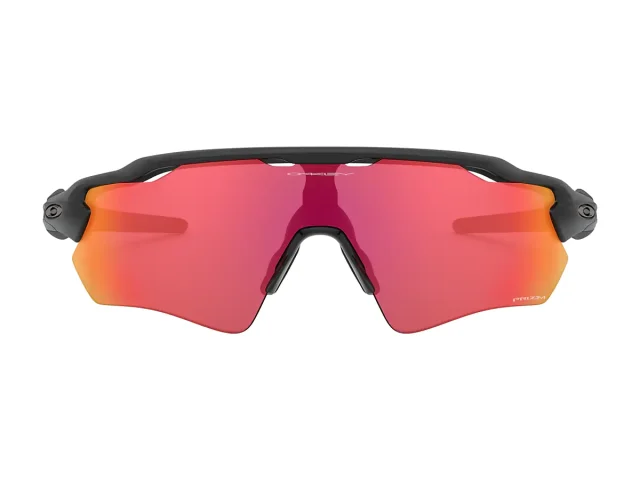
Matt Mitchell: At a certain point in my life I decided that I had reached a level of maturity that would prevent me from misplacing the personal effects we inevitably end up losing as kids (e.g. wallet, keys, watches, etc.). I had been on a good run of keeping all of my accessories accounted for — no debit cards left in ATMs or phones left on buses — and figured my sovereignty had room for another subject: a pair of sunglasses nonnative to a gas station.
Since 2015, the Oakley Radar EV Paths have been the only pair of sunglasses I’ve owned. The Radar model first appeared all the way back in 2006 and subsequent generations, like the Radarlock and Radar EV, have kept fidelity to the design aesthetic of the original. The EV Paths have performance in mind: their lightweight frame is defined by aerodynamic accents, and Oakley’s large, ventilated single-shield lens offers an unobstructed view that extends to the limits of my peripheral vision (“EV” stands for “Extended Vision”). They also do a pretty darn good job of staying in place despite turbulence from running and/or mountain biking. Oakley’s flexible “O Matter” frame material and grippy “Unobtanium” earsocks keep the glasses’ arms comfortably pinned to either side of my head.
While I’ve yet to lose my pair, I have managed to absolutely annihilate several lenses. As I’ve gone about replacing them, I’ve had the chance to play around with a few different styles. For trail running, the aptly named Prism Trail lens is the clear winner. Its sepia tint blunts the glare from direct sunlight but doesn’t darken my vision too much to obscure obstacles like roots and rocks on technical terrain. Oakley doesn’t sound like they have any intention of retiring their Radar line soon, so when I do ultimately lose my pair, I can rest easy knowing that they’ll be uncomplicated to replace.
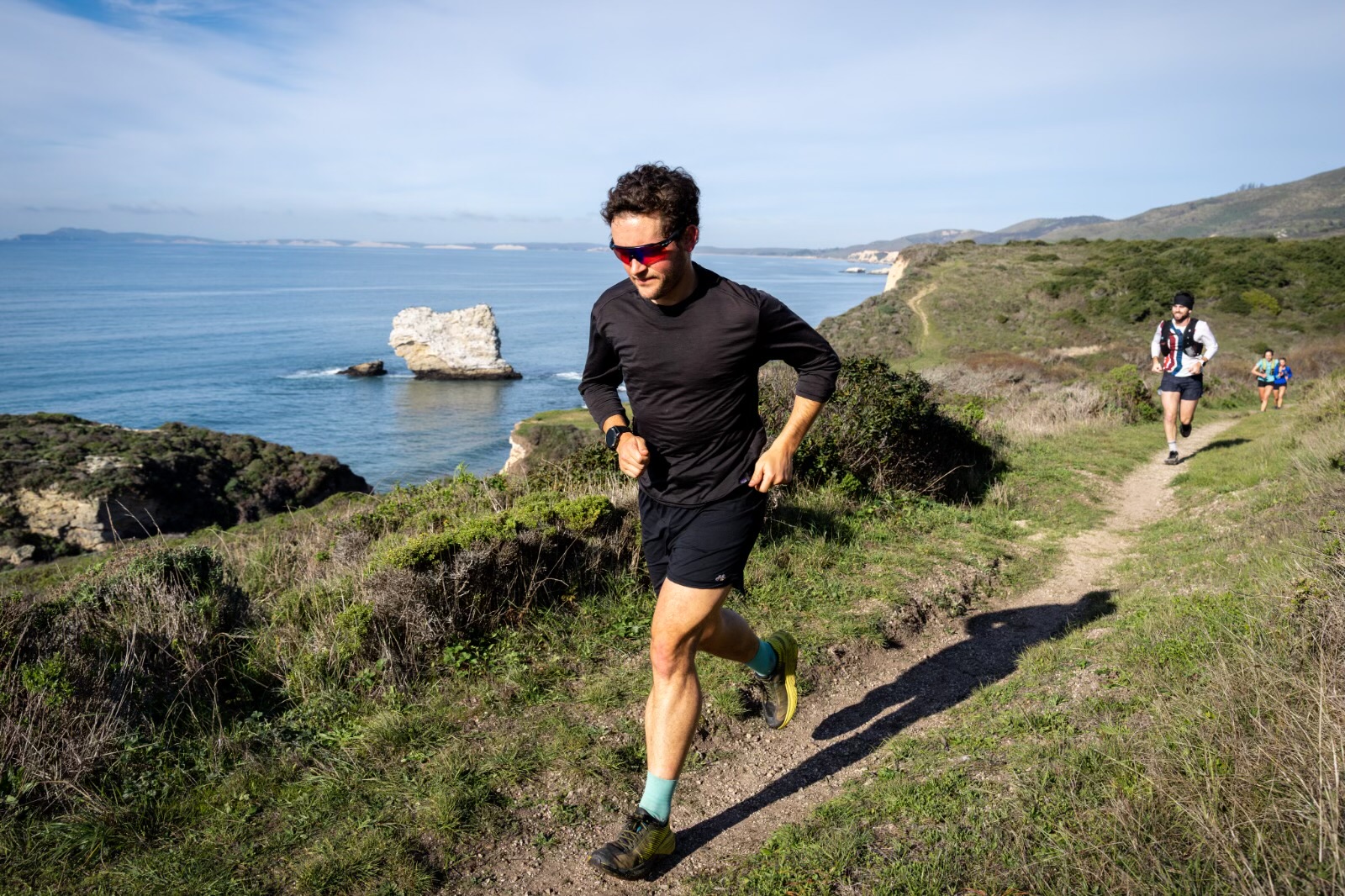
Frames: Hail Sagan, Carnivore, All Nighter, Night Phantom, Mud Slinger
Stated Measurements:
- Frame Width: 144 mm
- Lens Height: 59.5 mm
Measured Weight: 37 g
MSRP: $99–$149
Best For: Standing out, going fast
Luke Koppa: The folks at Pit Viper do things, well, differently. Even if you’re not interested in their sunglasses, I’d highly recommend simply perusing through their website because the degree to which they’ve replicated what looks like Windows ‘97 is impressive.
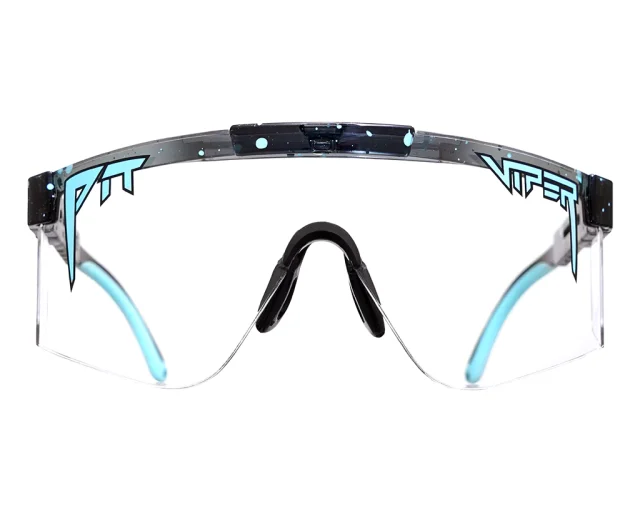
On the off chance you haven’t seen their shades on a kid with a mullet or a dog, Pit Viper’s goal is to make durable, high-performance sunglasses that look nothing like what else is out there. And overall, I’d say they succeeded.
I previously used the original version of Pit Vipers for the majority of my mountain biking and summer skiing for many years; I liked the generous coverage, and the simple fact that they looked pretty obnoxious. But to be frank, compared to more typical “performance,” big-coverage options, the OG Pit Vipers did lack a bit in terms of staying secure on my face when I got sweaty and they were a bit narrow for me.
Pit Viper has since expanded their lineup, still offering their original frames but also the wider 2000’s version and the giant Double Wide version, in addition to several other frames. The 2000’s frames’ nose pieces and arms are a big improvement over the OG frames in terms of security and adjustability, and they’ve been my go-to pair for mountain biking for the past few seasons.
While Pit Viper’s lenses aren’t interchangeable, they do offer some other adjustment options. Aside from the flexible, adjustable nose pieces, the arms are extendable and you can tilt the lens to keep it close to your brow or shift it farther away (they call this the TURBO adjustment system). For my big dumb head, I run the arms at the longest setting and have the lenses at “FULL TURBO” — the top of the lens tilted as far forward as possible to increase airflow and put more pressure on the nose piece.
I’ve been loving the 2000’s frame for my wide face since it fits much better than the Originals, but it’s nice that you can now choose from three different widths for their classic frames. All of them come in a huge range of lens and frame options. I’ve used several over the years, with the clear-lens options being my favorite for mountain biking and any of the dark lenses for sunny skiing. I still think Pit Viper’s lenses could use some improvement when it comes to the water / oil resistance; sweat droplets tend to leave more of a residue than some of my other sunglasses. But other than that, I’ve loved using them for all my higher-speed activities. They’re certainly not for everyone, but I’m gonna keep on using mine for years to come.
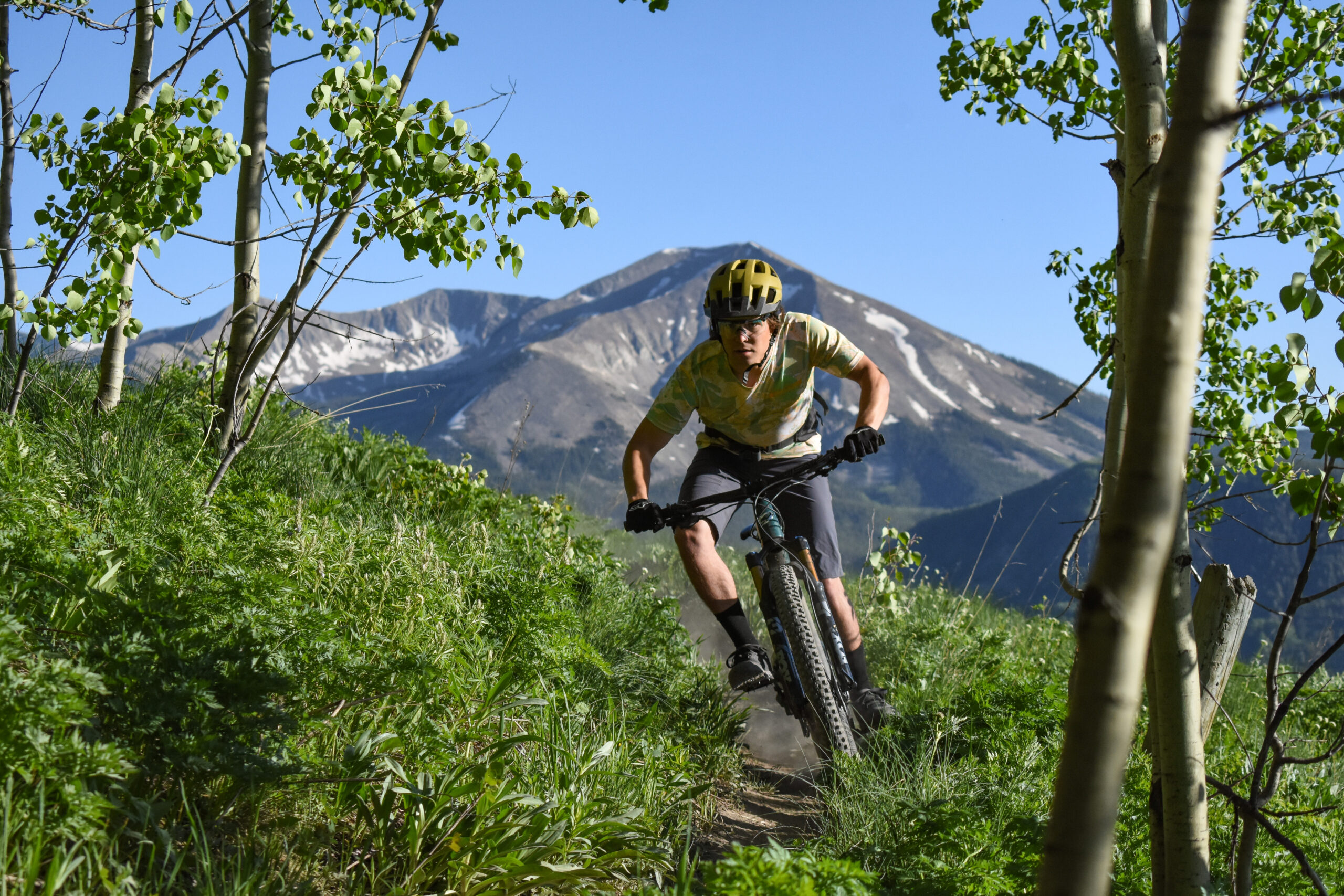
Frame: The Blacking Out & The 1993
Lens: Grey (Blacking Out Frame) & Brown (1993 Frame)
Blister Measured Dimensions (full width x height):
- Lens Width: 121 mm
- Lens Height: 50 mm
Measured Weight: 26 g
MSRP: $89
Best For: Active toddlers and kids
Kristin (& Linden): I initially wrote about the Pit Viper XS in a “Stuff We Like” roundup just over a year ago and not much has changed since then -– they are still my son’s favorite sunglasses and my favorite for him to wear when biking, hiking, and running. The XS is made for toddlers / kids and has all the same qualities (think style & “attitude”) that you would expect from a pair of adult-sized Pit Vipers. My almost 4-year-old son is on the lower end of the sizing spectrum, but thanks to the arm that extends, retracts, and tilts, the sunglasses not only fit my son, but they also sit straight on his face.
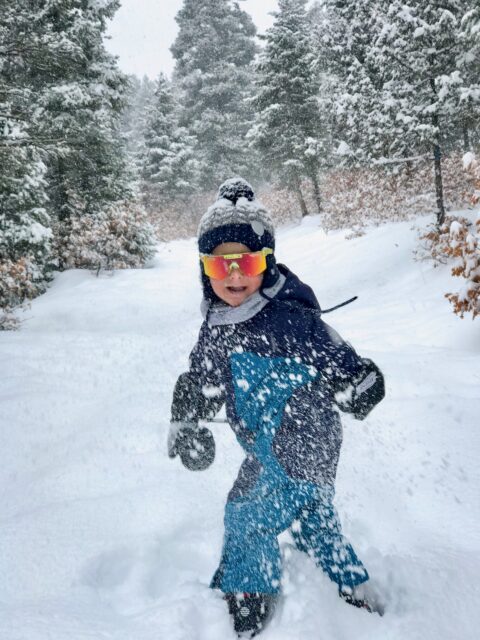
The XS has a couple of features that I really appreciate and that have been hard to find in other kid-sized sunglasses. The “Tie Down ™ Retainer Strap” makes our sunny river trips less stressful because I don’t have to worry about him dropping them into the silty water. My son also likes to wear them around his neck when not in use. The XS also has a rubber nose piece, and they are still the only pair of toddler / little kid sunglasses I’ve found that has one.
Over the past two years, my son and I have logged lots of miles on our Mac Ride and Kid’s Ride Shotgun, and on two unfortunate occasions, I fell / tipped over while riding with him. He came away from the first “crash” physically unscathed, but the second time it happened, his sunglasses cut into his nose. It was only a minor scratch but it still bothered me. The rubber nose piece provides cushioning while also creating space between his face and the sunglasses. In general, this design is a lot safer than any of his other sunglasses. The sunglasses aren’t cheap, but he’s already gotten a lot of use out of them and I know he’ll continue to wear them for many years to come.
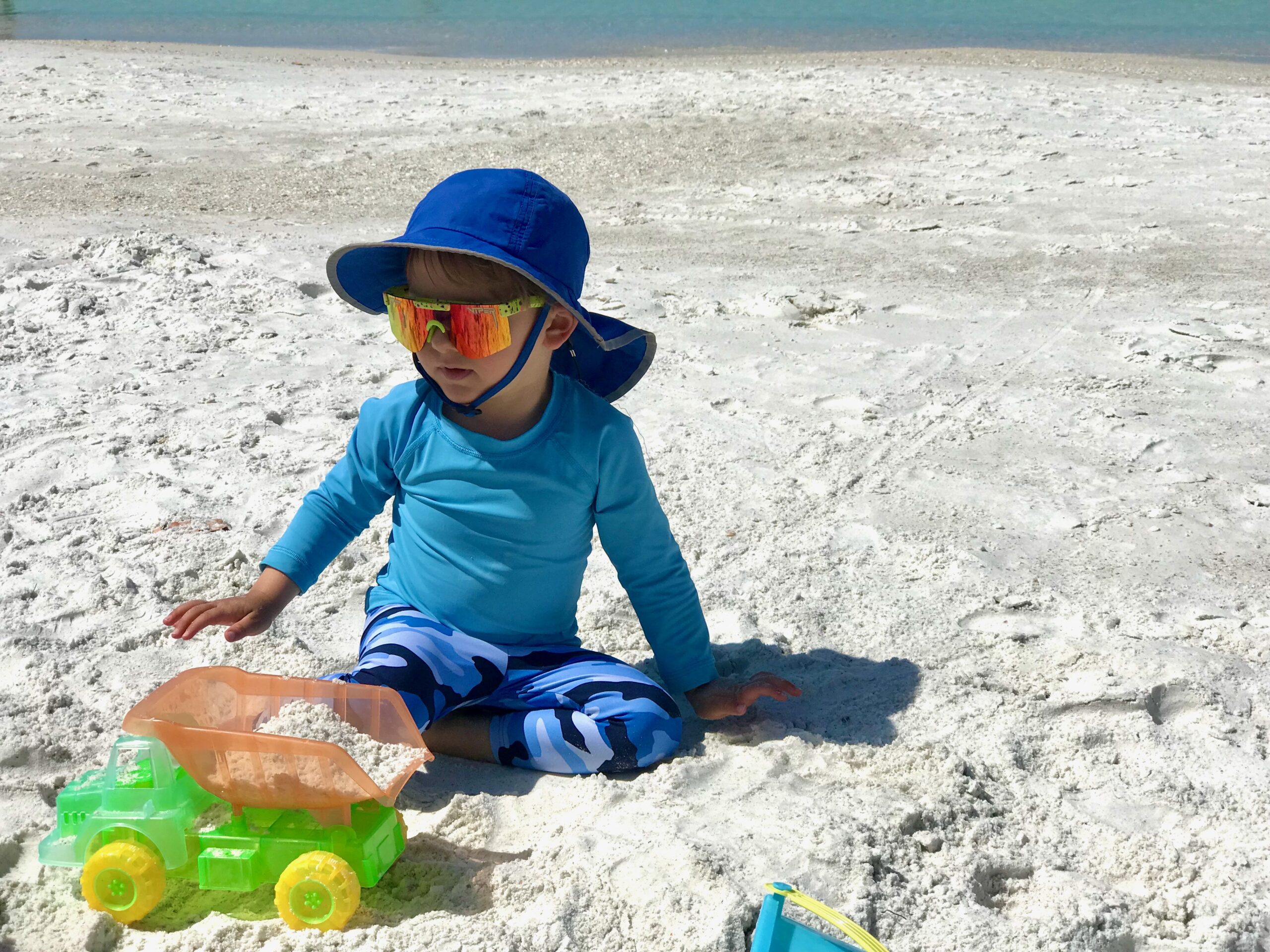

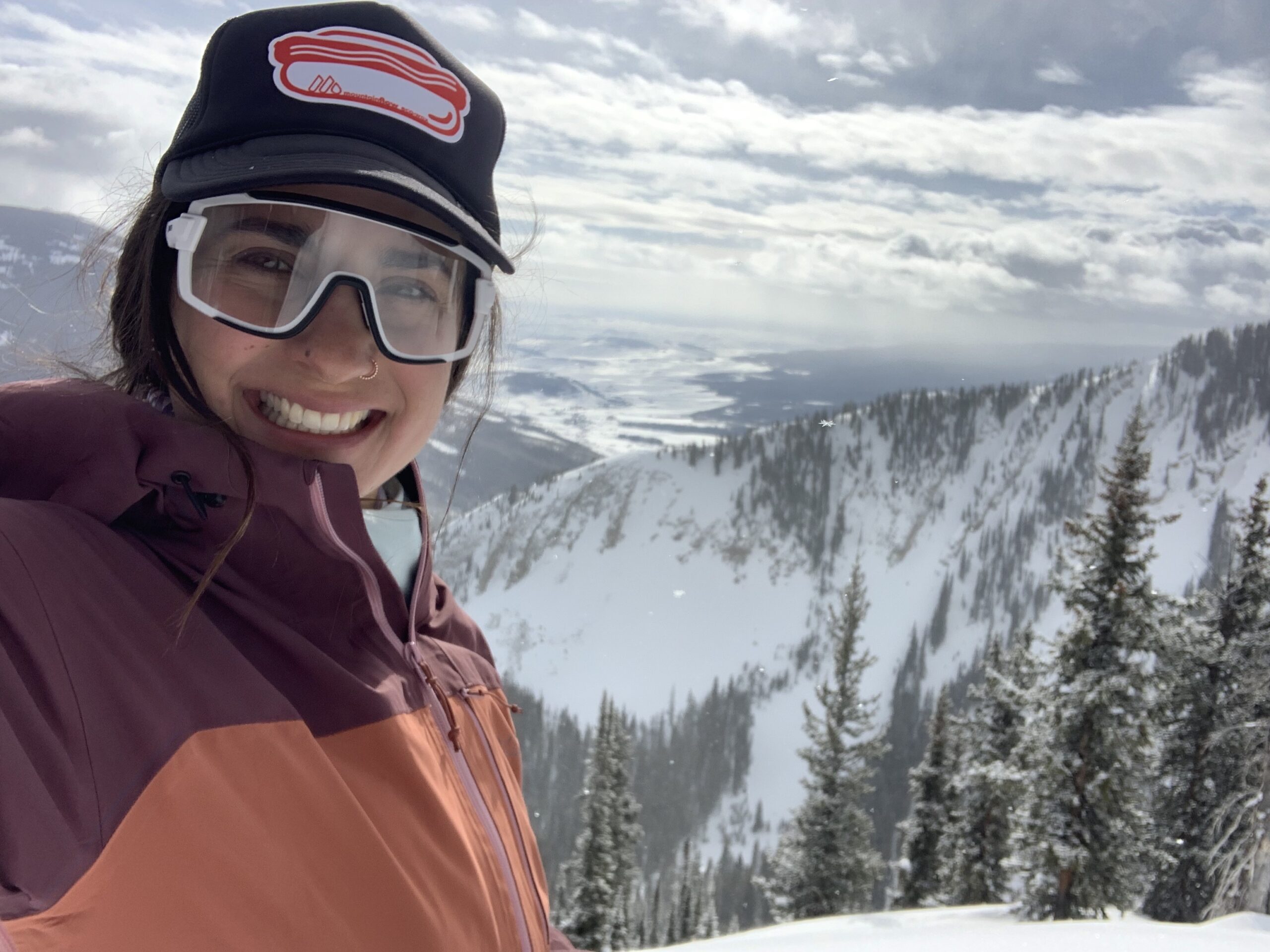
Awesome reviews on a wide variety of options! Thank you for posting!